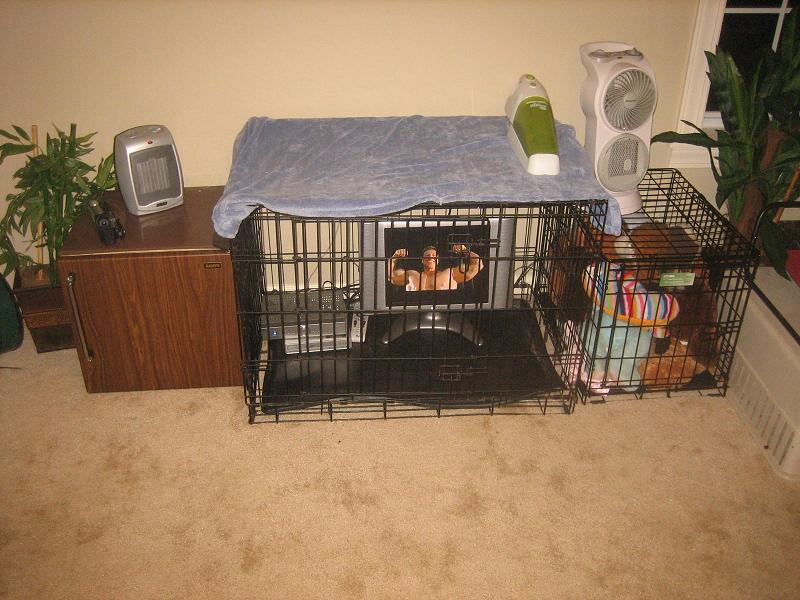
















Private Owner Caging and Enrichment Items
Below are some examples of private owner caging. When constructing your cage please remember to use materials that will withstand weather, as well as your primate’s strength. Be sure to seal, or nail all cage panels securely. For primates such as capuchins and larger, a double door entry system is highly recommended and law in some states, such as Florida. All cage openings should be closed with a lock to prevent pet monkeys from opening the cage and escaping as well as others from stealing them. Having a barrier between your monkeys and others is also highly advisable. (Remember, if your monkey scratches or bites someone even, if the person was trespassing, you run the risk of having your monkey confiscated and euthanized to test for rabies.) I have signs around my monkeys cage warning visitors not to put their fingers inside of the cage.
Cages for capuchins, spider monkeys, macaques and other similar size monkeys can be made with items purchased from any hardware stores. Cages can be made with wood 2x4s or aluminum poles for framing and chain link fencing. Ready made Iron cages can withstand most monkeys, but are either not large enough or very expensive to build. It is recomended that you you build your own cage.
Many owners build outdoor cages which connect to an indoor room/cage for the pet monkey to enter as they please, and keep them safe during cold seasons or inclement weather. If you live in a state where temperatures drop below what your particular species can withstand, either a heater, or indoor enclosure needs to be provided. Typically, for squirrel monkeys and smaller up to 75 gegrees F is ok. For larger species 65-70 is usually ok. The smaller species are especially at risk of catching a cold/pnuemonia from cold weather or drafts, and care needs to be taken in providing adequate temperatures in their habitats.
Enrichment items are a must in every pet monkey cage, especially for the medium sized monkeys and larger such as capuchins, spider monkeys, and macaques. Any activity that stimulates foraging is great. Outdoor enclosures with floors made of grass, wood chips, rocks, hay, etc. keep them busy while they look for insects and the such.
Installing small water falls such as the one pictured below provides a more natural looking habitat, and also provides fresh drinking water. Tire swings, fire hoses, ropes, and wood planks for climbing are great additions to monkey enclosures. All outdoor enclosures should have a nest box for shelter. The nest box can be a wood box with an opening on one end. Some private owners use wooden barrels, or plastic drums hung from the cage. Nest boxes should be elevated as most monkeys are arboreal and feel safer higher up.
A few companies online also sell enrichment items specifically for monkeys. A good toy for pet monkeys, such as capuchins which spend much time grooming each other, is a foraging board. It is a square piece of metal with fake grass (astro turf) on top, attached to the outside of the cage. Treats are sprinkled over the fake grass and monkeys need to spend time sifting through it to find their treats.
Other items are manipulative toys which can be hung inside or outside of the cage. Treats are inserted into the toy, and the pet monkey has to manipulate the toy in order to retrieve the treat.
Enrichment/Cage Items
The below items are used to hide food in so that the monkeys have to forage.

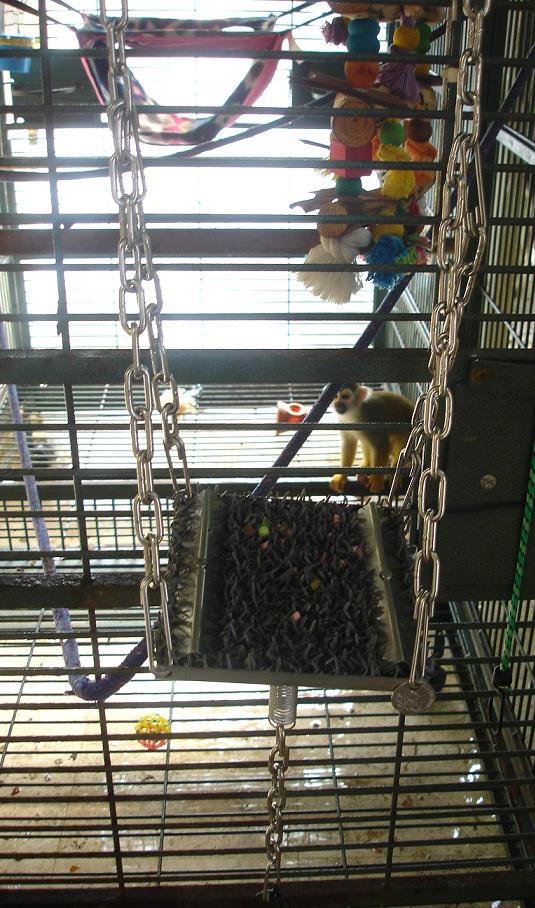




The below Swings and Nest box were made by me using materials purchased at Home Depot. They are PVC pipes, plastic chains that withstand up to 20lbs. and eye bolt. I used a drill, and saw to cut the PVC. Put ends on pipes. All the PVC stuff is in the plumbing section.



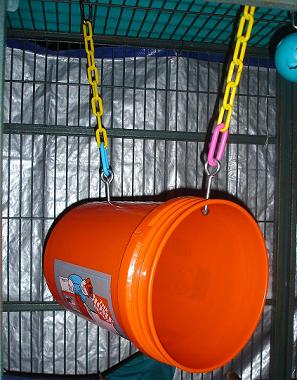

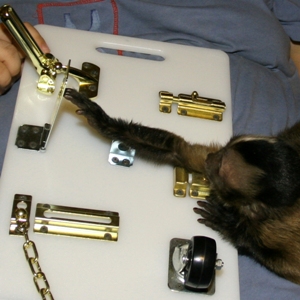



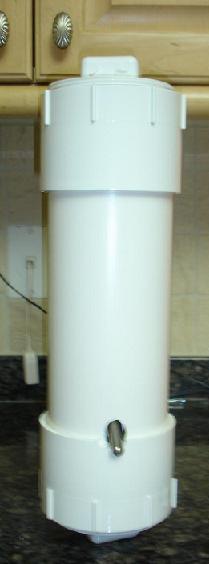
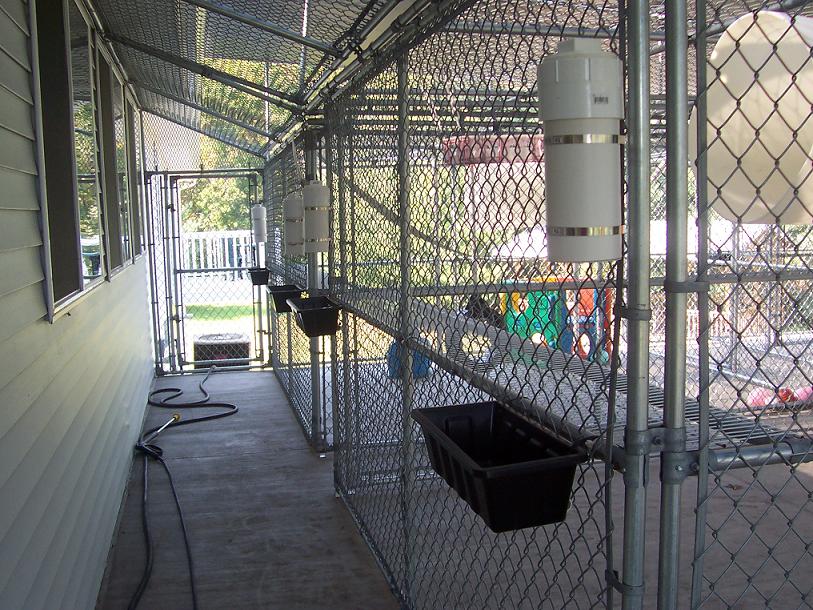
Enrichment Ideas
Many of the enrichment items I put in their cage are made from everyday household items. You just have to think "outside of the box" with things in your home. Just keep their safety in mind.
1) Smear peanut butter and jelly inside of a finished toilet paper roll.
2) Put treats that would rattle inside of a plastic container where they have to flip open or unscrew the lid a little bit.
3) Put monkey treats inside of a water bottle. The noise will keep them entertained as well as trying to get the stuff out of the small opening.
4) Visit local goodwill stores and buy toddler safe toys with lights and noises at the touch of buttons.
5) Hide food inside of toddler toys (ones that have openings with different shapes are great)
6) For larger monkeys (Capuchins, Macaques, etc) put treats inside of Milk jugs, and cartons with the tops screwed on. Trying to get them open will keep them busy, and trust me they will get it open.
7) Smear peanut butter in crab/lobster shells (after you have eaten them, of course).
8) Use plastic PVC pipes to make swings and hanging aparatuses for them to play with.
Many owners use old tires, and firehoses inside cages so they can hang and swing from. Another great idea is using large wood barrels as nest boxes.
Examples of Private Owner Caging
Below you will see the type of effort owners put into their monkey's enclosures to assure their safety, as well as comfort. Many owners go above and beyond what is required of them.
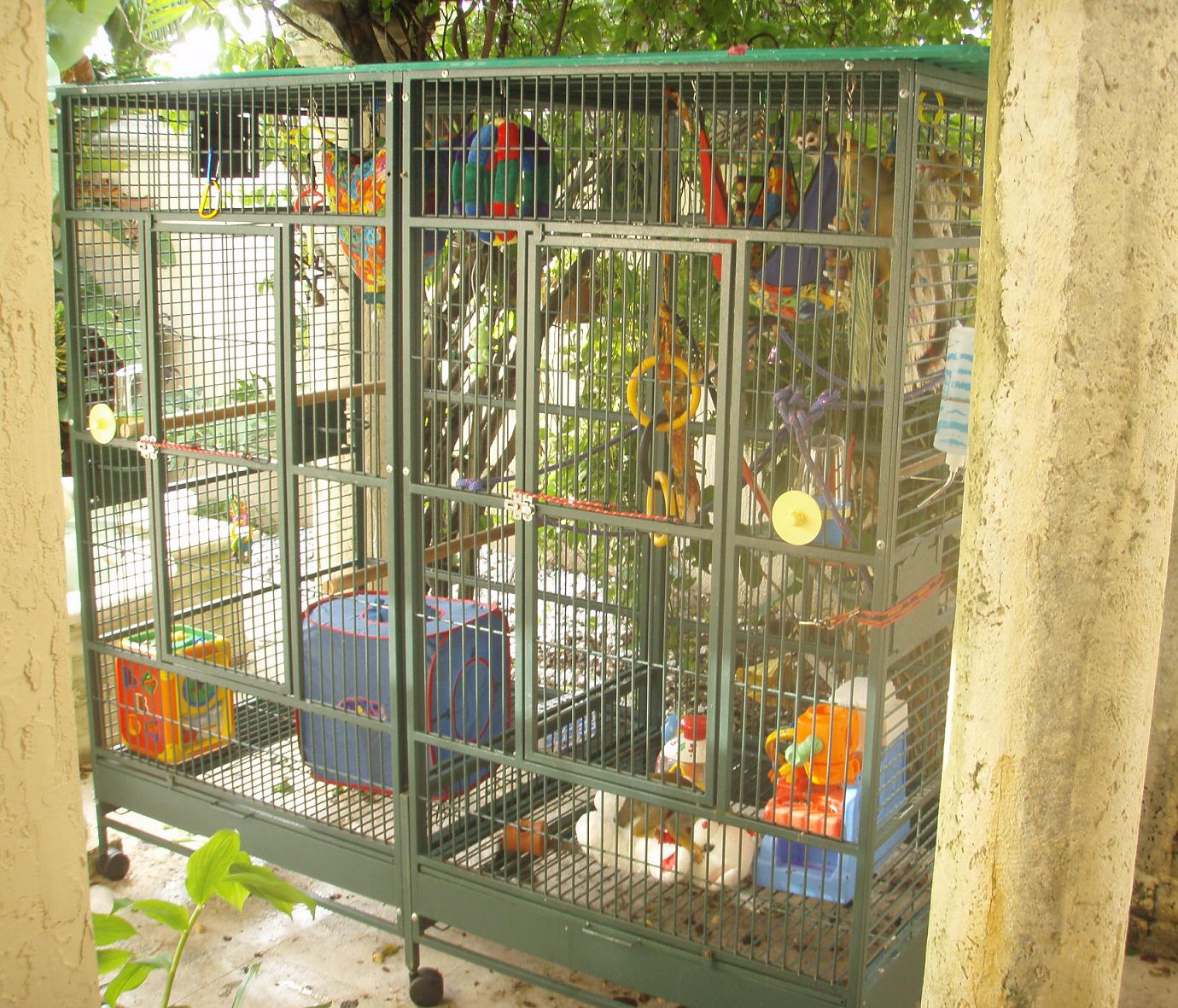
Cage for 2 squirrel monkeys. My cage 7ftx7ftx4ft. Has a nest box, bird swings, ropes, and toddler toys which are changed weekly for enrichment. This cage is out doors under Bougainvillea trellis, and water fountain. My squirrels enjoy their cage and often catch gnats that fly by. They also enjoy climbing around the trellis when I let them out.

Cage for 3 capuchin monkeys has a waterfall, 2 nest boxes, grass floor, Tree trunks, and firehoses for climbing. Cage is about 20 feet high, and 16 feet accross.
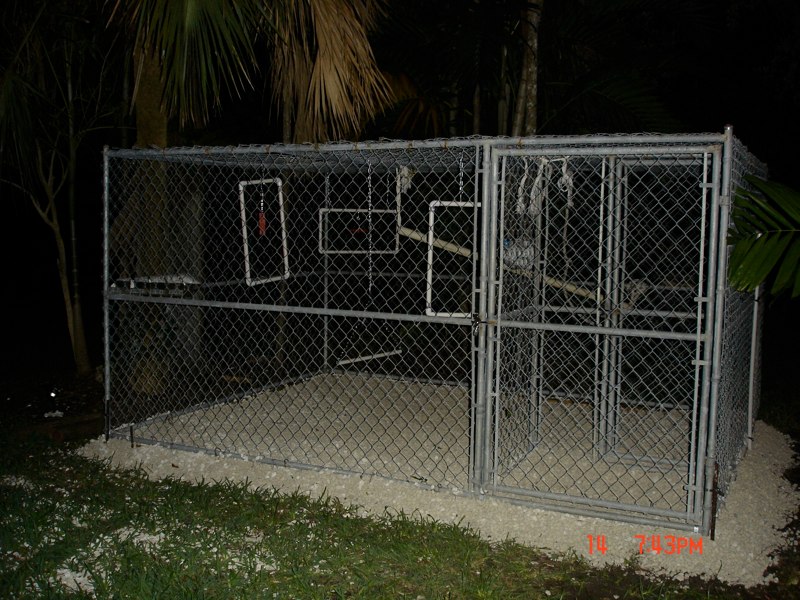
Double doorentry to prevent escape. This is a temporary cage built until the family has permanently moved to their new home where the will be building a larger cage similar to the one above.
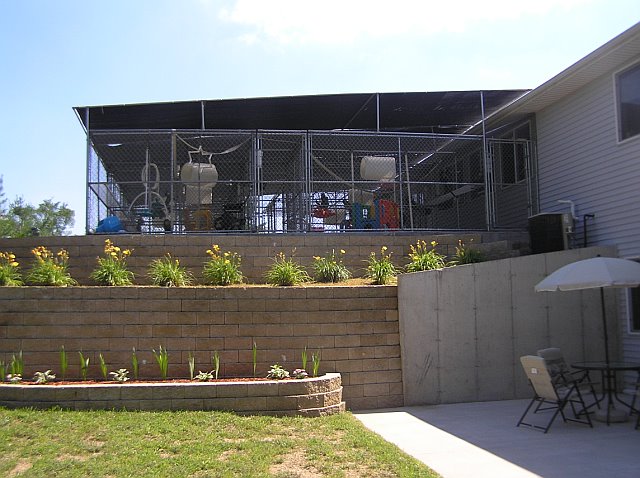
Example of barrier fence to prevent strangers from having contact with monkeys.
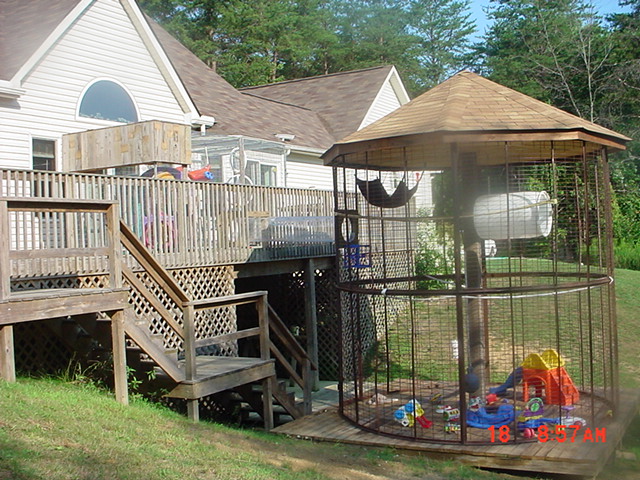
Caging for 3 capuchin monkeys. There are 3 cages. Two are visible as they are outdoors. The cage on the top deck leads to a third indoor cage. All 3 cages are connected to each other by tunnels that monkeys can enter freely.
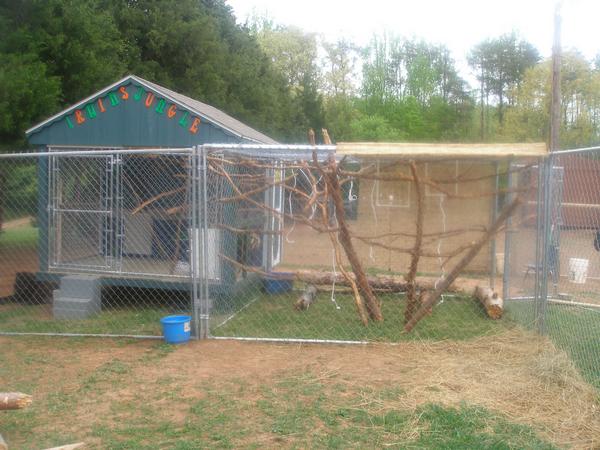
Outdoor monkey cage, with connected indoor housing.
Caging at private owner home for capuchin monkeys. Has outdoor caging that connect to indoor room. The two outdoor cages connect to each other, which then have a tunnel to indoor room. Outdoor caging has perimeter fence.
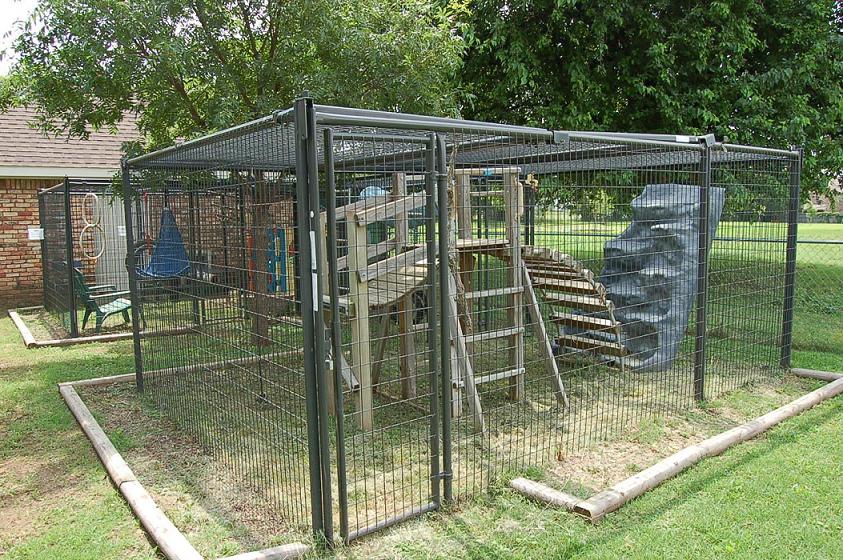
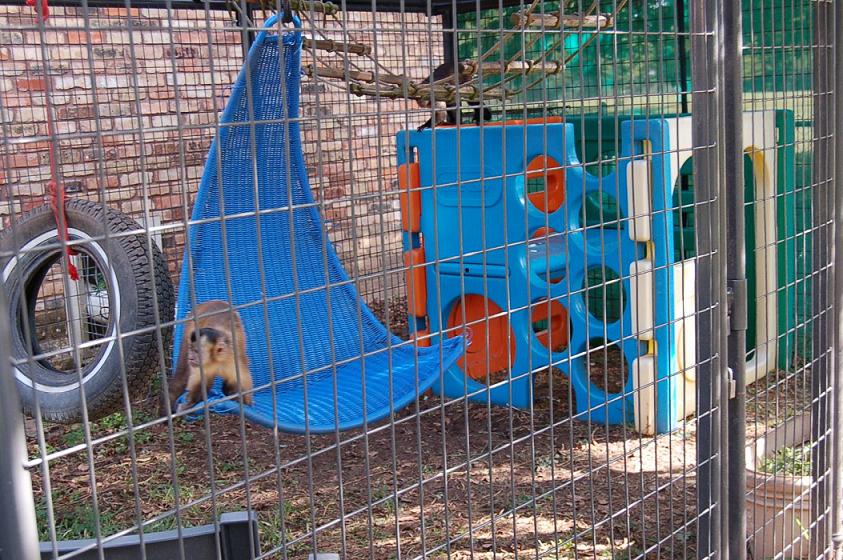
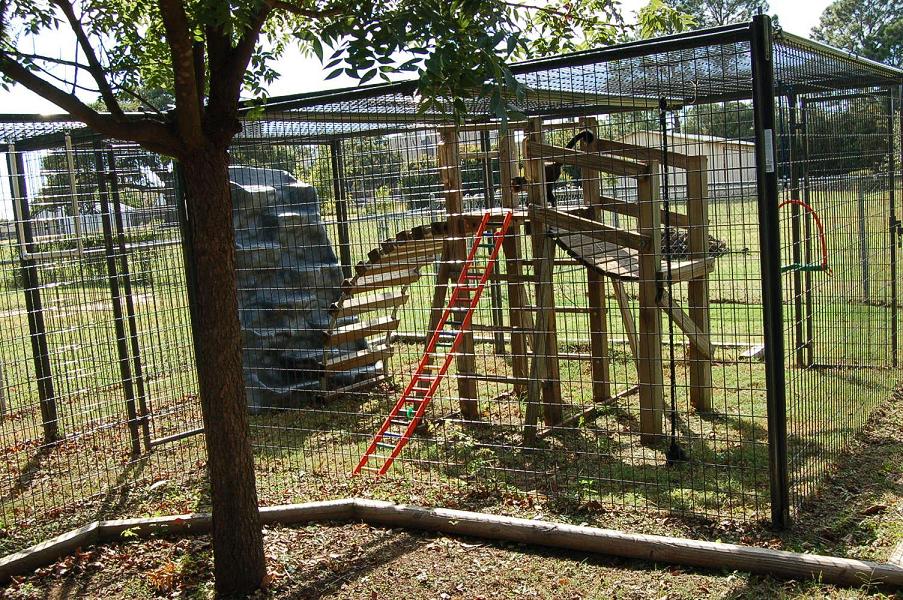
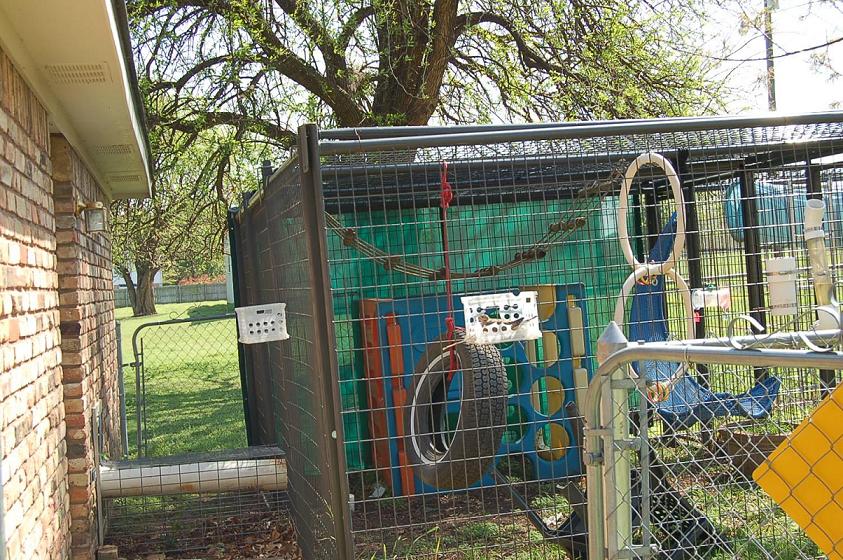
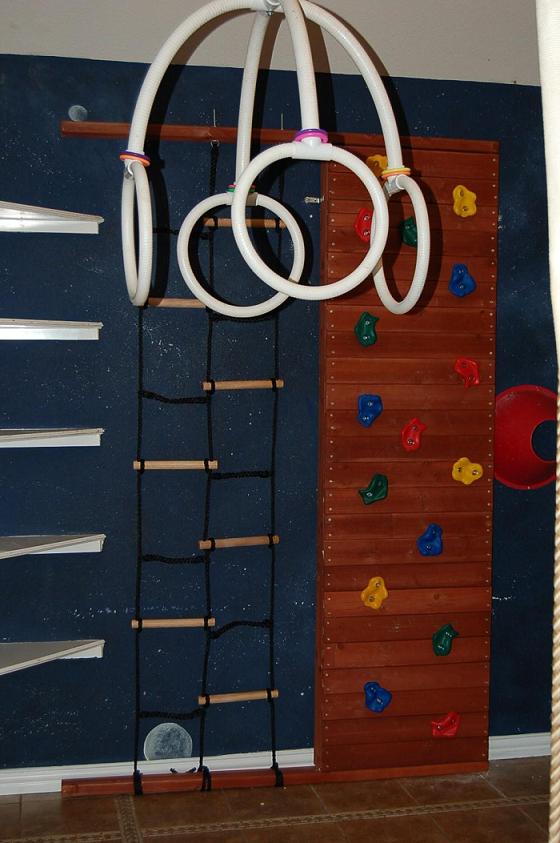
Below is the indoor Monkey Room at Dr. Paul's home. This is a 500 square foot room on a 2nd floor over looking a golf course. The room has the very large enclosure, as well as a sitting area for the owners to sit and spend time with their 2 capuchins.
1) Shows the sitting area next to the cage. The entire room is 500 square feet. The water proof LazyBoy furniture allows the ability to thoroughly hose out the room without damaging the furniture. Fan is also waterproof. The yellow paint on the walls is Marine waterproof Paint. The windows are Hurricaine and golf ball warrantied against breakage. There is a thin plastic layer between the dual panes to not allow the breakage to penetrate the room. The tinting is sufficient to allow the monkeys to enjoy the outside view but limits the golfers observation to 25-35 feet. The flooring is a concrete overlay that is stamped and seamless. They continued the cement flooring up the wall to meet the bottom of the windows. This prevents water damage from excessive hosing. The backside of the cage is on heavy duty, tripod rollers(Walmart Item). These are not used to move the cage but allow the backside of the cage to be elevated next to the L shaped drain to allow for easy hosing without having to enter the cage. For climbing apparatuses they used flexible PVC pipes, monkey bars purchased at Walmart, colored buckets as nest boxes,
2) This shows the L-shaped 6ft x 6ft Drain at the backside of the cage. This allows for better hosing of Veggie leftovers and Fecal material. The limitation with this is the 10" drain pipe to city sewer that is the maximum size that is allowed in our area. This L-shaped drain keeps the contaminated food, drain and other products out of reach of curious hands and mouths.
3)One of his beautiful white faced capuchins inside of cage.

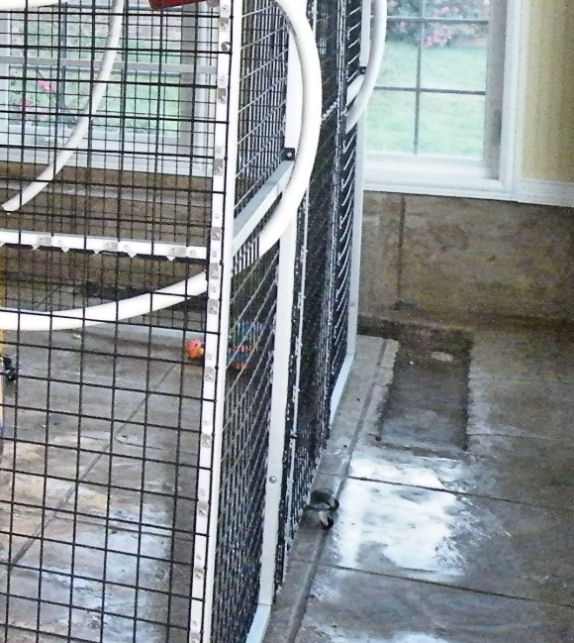
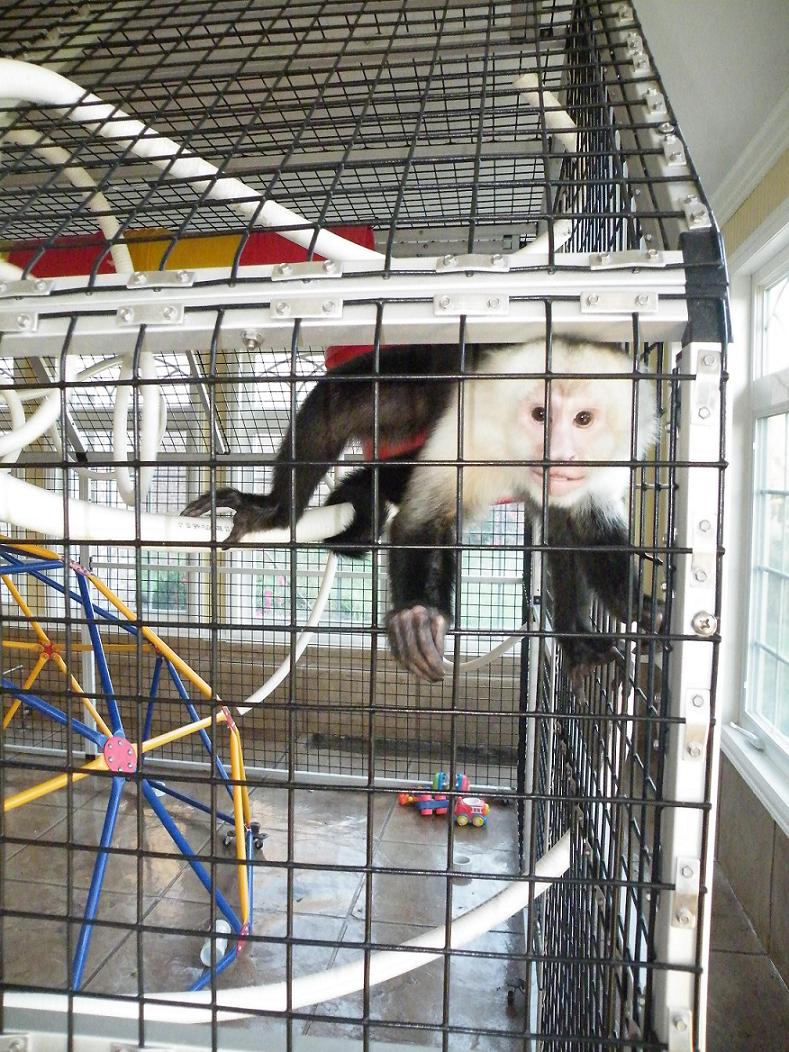
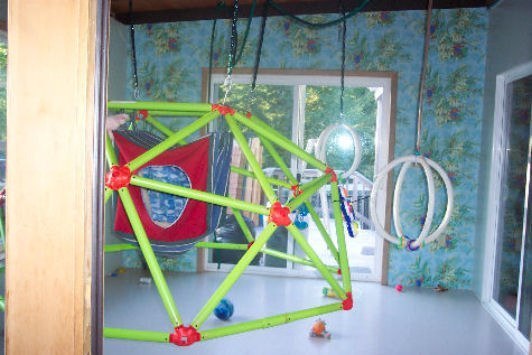
Dome jungle gym suspended above floor.
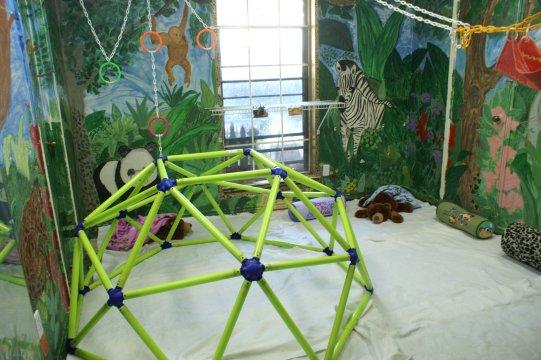
Jade's Enclosure- Caging is for capuchin monkey, Jade, and Kinkajou.
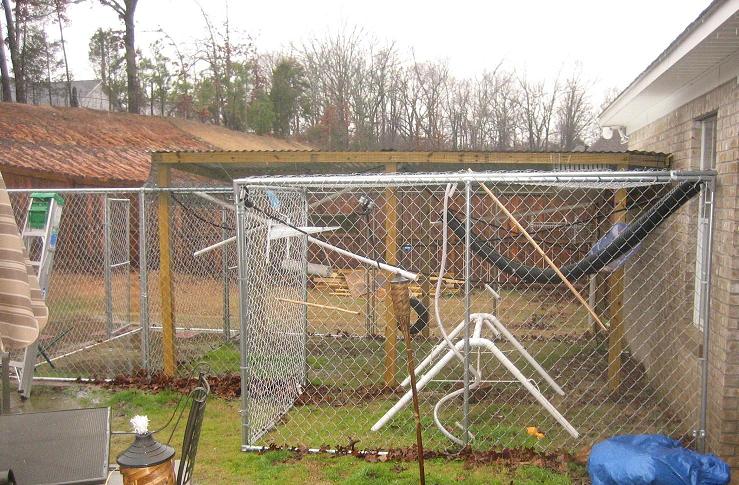
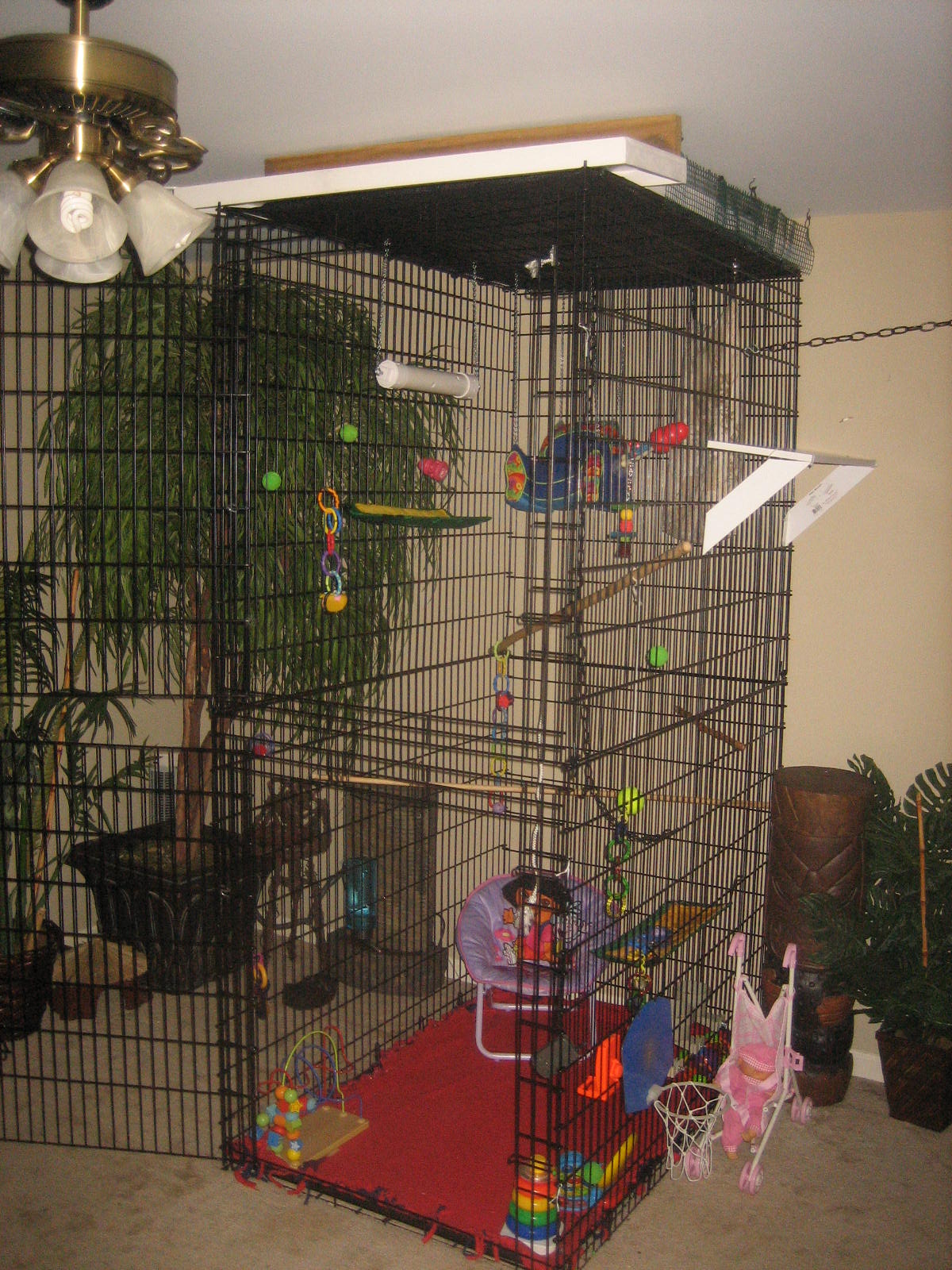
Indoor playroom
One of my favorites..."TV in a Cage" so that animals can't get to wires remote.
